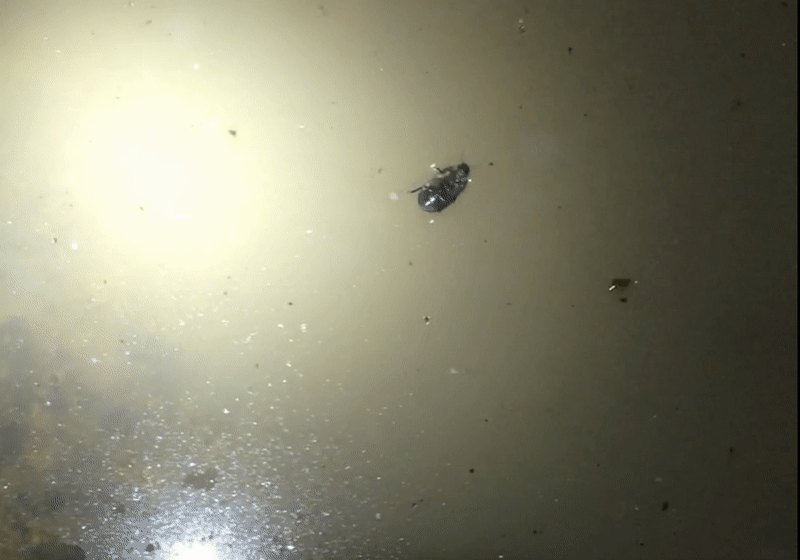Walking upside down underwater? Is It even possible ??!! Yes, it can be done. A water - dwelling beetle can scurry upside down just along the surface of water.
Thanks to surface tension, lizards, ants, spiders and snails can all walk on the surface of walls. But scavenger beetles perform a precarious feat. These mind-boggling insects can flip themselves upside down, under the surface of water and walk as if they are clung to the underside of a glass table !


Not only can the beetle move upside down under the surface of water, but also remain in one spot completely motionless as if it was just glued there. However, it is still unclear how the beetle physically manages this feat. According to the idea put forward by researchers who filmed the beetle’s inverted walking technique, these beetles are known to capture air bubbles by means of their hairy legs to keep them oxygenated under water. There is a high possibility that this behaviour may also help the beetle to remain afloat and pinned to the surface of water. The bubble’s buoyancy gives the beetle enough support to put pressure on the water-air boundary with every step without breaking through. The beetle’s footsteps also create a “tiny hill” of water along the surface as it goes.
In simpler words, scavenger beetles use air to walk upside-down underwater by using air like surfboards. This water-walking superpower might be used by scavenger beetles to stay far away from the trap of predators that lurk along the bottom of ponds or lakes.
This is the basic conception of the scientists who first spotted this phenomenon and believed it could pave the path for advanced aquatic robotics. This technique could also be used to further advance robot locomotive capabilities for military, research or rescue purposes. This breathtaking beetle highlights how often we ignore and miss the amazing things the smallest of animals do everyday.

Comments